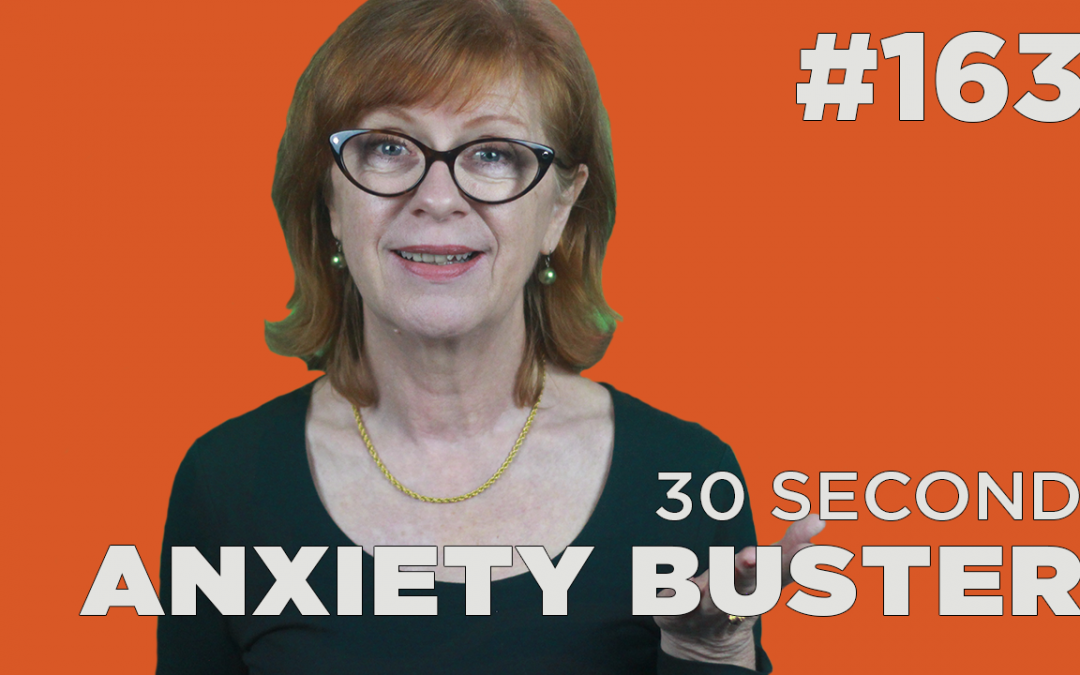You can beat anxiety if you develop a habit that interrupts your physiology. You can develop a habit of mindful breathing that will disrupt your stress response and let you make a different choice and take new action.
Video Transcript:
This week’s hot tip will buster your anxiety. I’m Liz O’Brien. I’m the belief buster here at the Auspicious Arts Incubator. Over the years that I’ve been working with artists here, I’ve noticed sometimes anxiety holds you back. So, JP has asked me to share something that will help you buster the hold that anxiety has on you.
This tip is a simple Mantle’s [SP] approach to dealing with anxiety. It’s not a magic bullet, I mean, nothing is, but it’s an important first step in reducing the overwhelm that anxiety produces. And then you can start to think clearly again and know what your next step is to get you back on track.
Mantle’s is a circuit breaker. It lets you respond to the situation and your emotions instead of just react to them. Anxiety is an aspect of the stress response. It’s a mind and body reacting to fear or self-doubt that comes from our beliefs about ourselves like, “Am I good enough?” Or other beliefs about other people’s reactions, “What if they don’t like my work? What if they don’t get it?” Or maybe our beliefs about the way the world is. Something like, “Maybe artists have to suffer. They never get real recognition in their lifetime.”
And when the stress response is activated in the form of anxiety, then what we often just want to do is run away or we get paralyzed by the anxiety and we can’t do anything at all. So we procrastinate and we avoid doing the work, or we avoid to speaking to people about getting the work out there. And then when that happens you feel upset with yourself, you get further behind the deadline, and your anxiety just keeps building.
So, the first thing to do is to breathe. When we are stressed, stress hormones affect the part of the brain to do with clear thinking and the stress hormones activate the part of the brain that stimulates fear and aggression. And along with that, the body can get so tense and tired that we don’t breathe deeply enough. So, the first thing to do is to stop for a moment and take two or three slow deep breaths in and out. What that does is it slows down the panic by deactivating the stress response. You can close your eyes as you take the breaths or you can just look down at the floor and focus your attention down there.
So why don’t we try it right now for a few moments? You can sit down or you can just stand where you are. Close your eyes if you’re comfortable doing that and look down if that’s what you’d prefer, I’m going to close my eyes and I’m going to lead you through this a little bit.
So, staying comfortably, eyes gently closed, and take a slow, deep breath, filling your lungs right up to the top, hold the breath at the top for a moment, and then breathe out, completely emptying your lungs. And when you feel ready, take another slow deep breath in, hold it at the top again. And this time as you exhale, let go of any tightness or tension that you are aware of in your body. And then just one more like that at your own pace. And open your eyes when you are ready, notice how you’re feeling now. Maybe a little bit less agitated, a bit calmer, and so maybe now you feel ready to do something that you were avoiding before.
The more you use this tip, the less the anxiety is going to build up, and even a small shift helps. So, try it throughout the day when you feel anxious. If this tip was helpful to you, then please share it with another artist that you know. And if you’d like a more in-depth information about this tip, then there’s an extended version on the ASAP program. Check it out on our website, auspiciousartsincubator.org.

